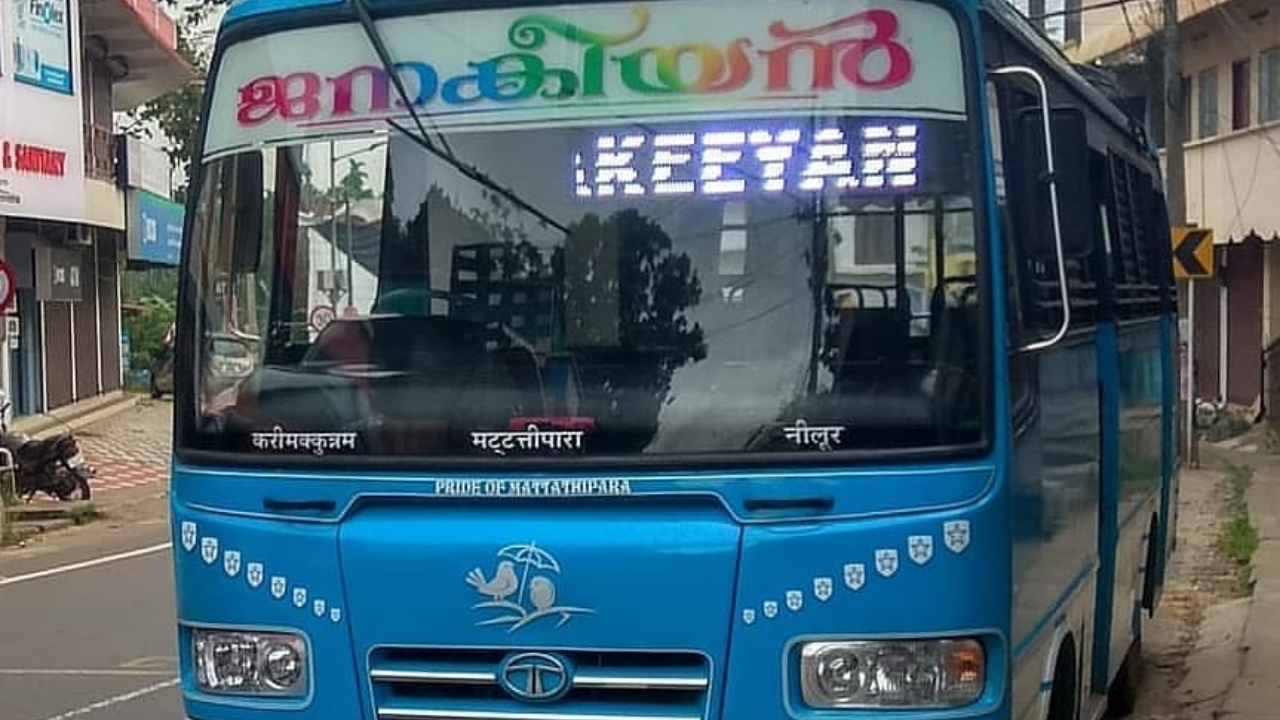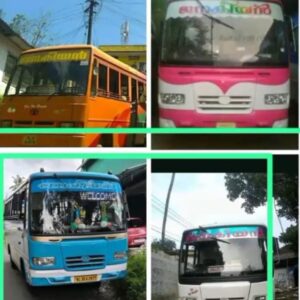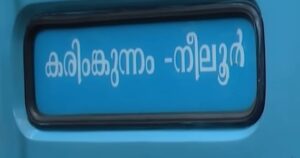For residents along the 9-km hilly stretch between Karinkunnam and Neeloor, the loss of the bus has been devastating.
Published Sep 03, 2025 | 11:28 AM ⚊ Updated Sep 03, 2025 | 11:28 AM

Janakeeyan bus. Credit: www.instagram.com/mlankallel/
Synopsis: On 17 March 2008, Janakeeyan — literally “the people’s bus” — rolled out on the Karinkunnam-Neeloor route. The ownership later stabilised at 72 shareholders when four members withdrew. In its early years, the bus ran with remarkable efficiency, becoming profitable enough to replace the old vehicle with a new one by its third year.
For nearly 18 years, the Janakeeyan bus was more than just a vehicle — it was Mattathippara’s collective heartbeat.
Bought and run by villagers pooling their modest savings, it was their pride, their connection to the outside world, and their daily rhythm.
From ferrying students to schools and workers to towns, to carrying stories and memories between the border villages of Idukki and Kottayam, Janakeeyan symbolised people’s power in motion.
But on 2 August, its double bell went silent.
Crippled by the aftershocks of COVID-19 and a bitter financial blow from a co-operative bank, the only bus service between Karinkunnam and Neeloor screeched to a halt, leaving hundreds stranded.
The story of Janakeeyan began in 2008, when transport facilities in Kottayam’s Kadanad grama panchayath’s Mattathippara were almost non-existent.
A KSRTC service introduced briefly from Thodupuzha had already been discontinued, plunging villagers back into isolation.
It was then that 76 residents gathered in the courtyard of Holy Cross Church and resolved to buy their own bus.

Janakeeyan Bus from 2008
Each family contributed ₹10,000, and with that pooled fund, a second-hand vehicle was purchased.
On 17 March 2008, Janakeeyan — literally “the people’s bus” — rolled out on the Karinkunnam-Neeloor route.
The ownership later stabilised at 72 shareholders when four members withdrew.
In its early years, the bus ran with remarkable efficiency, becoming profitable enough to replace the old vehicle with a new one by its third year.
Over time, the community upgraded to better buses, operating as many as 18 trips daily.
For over a decade, Janakeeyan ran without serious hurdles, connecting Mattathippara’s inner villages — Areekal, Chokkanad, Aarkakkadamba, Pottenplav Nirap, Ambalappadi, and Thunuthek.
Students, women, and daily-wage labourers alike queued up at its stops, travelling not just with convenience but with the pride of co-ownership.
Then came COVID-19.
The nationwide lockdown shut the service for nearly a year and a half.
When operations resumed, ridership never fully recovered. Many regular passengers had shifted to private vehicles, and collections dipped drastically.
“Before the pandemic, we collected around ₹7,000 a day. After reopening, the collections nosedived — barely enough to cover salaries and diesel costs,” said Benny Augustine, secretary of the Janakeeya Bus Aikyavedi to South First.
If reduced ridership weakened the wheels, a betrayal from the financial system broke them.
During its profitable years, the committee had deposited nearly ₹3 lakh in the Mattathippara branch of the Kadanad Co-operative Bank. But when the bank slipped into crisis, the villagers’ savings were locked away.
“We had pinned our hopes on that deposit to ready the bus for its fitness test. But we couldn’t withdraw the money. Without that, the service collapsed,” Benny explained.
The absence of those reserve funds meant there was no money even for routine maintenance, forcing Janakeeyan to stop operations.
For residents along the 9-km hilly stretch between Karinkunnam and Neeloor, the loss of the bus has been devastating.
“Without the bus, the daily commuters are facing much hardships. They may have to rely on jeep services and it’s a financial burden for them,” said Madhu K R, member, Mattathippara ward to South First.

According to him, daily-wage workers also echo their distress.
With no affordable alternative, commuting to nearby towns has become both time-consuming and expensive.
Despite the crisis, villagers have not lost hope. The existing 15-year-old bus is currently in a workshop for repairs, with committee members pooling funds to bring it back on the road. The goal is to resume services within weeks while working towards purchasing a brand-new vehicle worth around ₹25 lakh in the next few months.
“From 2008 till now, we have tried five different buses. Our dream is to buy a new one soon. The demand from villagers is strong, and we will not let this lifeline vanish,” Benny said.
Community-owned buses are not unheard of in Kerala.
Over the years, several such initiatives — born from collective pooling of money and goodwill — have taken off in villages starved of transport facilities. Some are still operational, while others have ground to a halt.
But what sets Janakeeyan apart is its remarkable run of nearly 18 years.
“We didn’t think that there would be another service of this kind which could last this long. That’s what makes Janakeeyan special,” said Benny.
For a venture that began with 76 families contributing ₹10,000 each, its longevity is testimony to the community’s spirit and the trust people placed in their shared lifeline.
For the people of Mattathipara, Janakeeyan, was never just about transport.
It was a rare example of collective ownership — a community coming together to solve its own mobility crisis.
For them, its absence is more than an inconvenience; it feels like a fracture in their shared identity.
As the double bell of Janakeeyan waits to be heard again, the villagers cling to the hope that their people’s bus, which once bound two districts together, will roll back onto the winding hilly roads it called home.
(Edited by Amit Vasudev)
